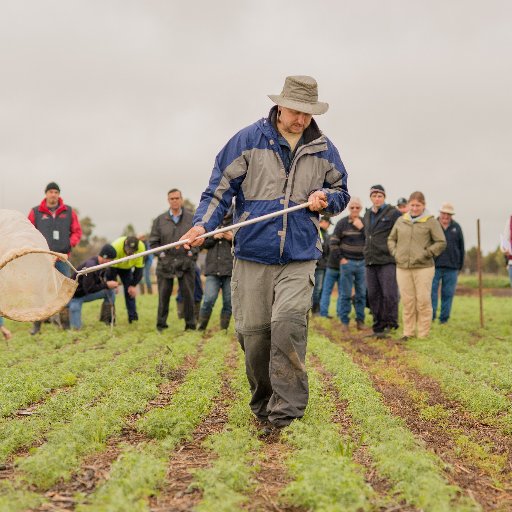Exploding a House to Kill a Fly
- Dr. Jonathan Lundgren

- Apr 22, 2022
- 4 min read
4/23/2022
Dr. Jonathan Lundgren
Executive Director
Ecdysis Foundation

Sometimes fear leads us to replace a barking dog with an uncontrolled monster. There is no doubt that a dog may be a threat, and this should be recognized. But myopic solutions can have costs that far exceed those of the original threat. In fear of a threat, sometimes we lose things we didn’t know could be lost.
There is a large meat packing facility nearby. A VERY large packing facility; it processes thousands of hogs per day. It preys on the desperate to find workers, and work conditions are poor. And those workers talk. In the killing and cleaning areas, roaches pour through cracks in the walls.
This facility is too big to fail. Management receives a warning call when the federal inspector is planning on coming for a visit. The infested rooms where the meat is prepared are doused with a heavy insecticidal coating to keep the roaches at bay for a few days. The inspection passes.
Much of the meat in grocery stores comes from a few places like this. A label is stamped on the meat package that it is “Inspected”, but the meat is not safe. Commercial meat has some of the highest pesticide contamination rates of all foods tested. That label is the cold, jagged blade that is slowly dragging across the jugular of our loved ones.
Meanwhile, we raise our meat on pasture for as much of the year as we can, and avoid grain for our sheep. We are small, and we are skilled in processing our animals cleanly and humanely. There are a lot more restrictions on who and how we can sell this meat. Those that control the industry protect their interests by saying that meat the way we raise it isn’t as safe as theirs.
Indeed, the same restrictions on our meat sales exist even if it is processed at state-inspected, local meat lockers, unless they are federally inspected. But most local meat lockers don’t want to go through the hassle of attaining this certification. Small-scale, locally produced, pastured meat products that are healthier for consumers are cut off. The only meat available to most consumers is chemically sterilized from unhealthy animals at the large, industrial facilities. A system with more bureaucracy than sense has passed judgement.
I visited a cherry orchard in Washington. The orchards had a lush plant community growing, and I asked the orchard owner whether he had considered grazing that ground. He said there was no way with the Food Safety Modernization Act (FSMA). To illustrate his point, he told a story.
The inspectors came to his orchard near harvest, and he picked a cherry from one of his trees to see if it was ripe. He spit the pit on the ground of his orchard, and the inspectors gasped. They gave him three citations for putting his saliva-covered cherry pit onto the soil of his orchard.
He was convinced that the regulators would never allow animals onto his orchard. For fear that the animal manure would cause a food borne illness outbreak. But the cherries never touch the soil- they are hand harvested. And there has never been a recorded outbreak of food borne illness associated with cherries.
So to manage the vegetation under his cherries, he tills the soil, and sprays herbicides multiple times per year, thereby reducing the nutrition potential of his crop. And as we spoke, the mowers were driving through his orchards, burning diesel and costing him a small fortune. For one orchard, the spray bill was around $200,000 per year.
When light is shone, the roaches scurry.
The systems that have been put in place to stop food borne pathogens cause more harm than they prevent. The culture that inspired it does not allow the evolution of our food system. It prevents consumers from meeting their farmers. It leads to sickness and malnutrition in humans. And false perceptions about food safety are a major bottleneck for attaining the potential of regenerative food systems.
To stop a potential E. coli outbreak, we lost what it means to be human. Connecting with our food and the land that produces it are an essential part of this humanity.
The best answer to the problem of food borne illness is not sterilization, it is a fundamental shift in how we function as society. Society needs to fundamentally slow down and prioritize non-monetary currencies that are not easy to quantify. We need to connect with animals and plants and soil and life on our farms. Suggesting such a shift could accuse one of being naïve and unrealistic. But this doesn’t make the solution less true. And our society will change whether we decide to or not.
Exposure yields experience, and experience is empowering. Perhaps a first step in overcoming the imposed sterilization of our food system is for more people to grow our own food. In a garden. With regenerative practices. And use this food to cook meals. This simple practice is also an important way for us to scale regenerative agriculture. The world needs more farmers.
Food is not something to be feared. What should be feared is losing our sense of who we are to protect ourselves against a world that we no longer feel a part of.





Comments